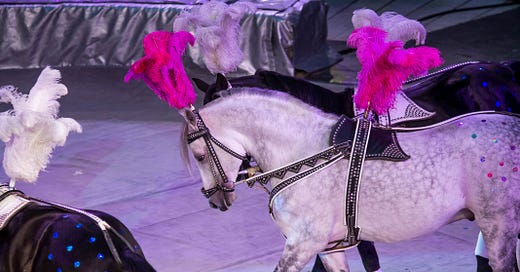Worship's One-Trick Pony
The sole emphasis on music as the primary worship offering may have actually hindered worship understanding and exacerbated worship conflicts. So, it often gets blamed for church dissension that can only be fixed with a healthier biblical and theological understanding of worship.
The origin of the idiom “One-Trick Pony” goes back to the days of traveling circuses. A trained pony or small horse was often used as a main circus attraction. Without any other acts or animals, these small circuses were often criticized as only offering a one-trick pony.
The idiom is now used to identify a person or organization that only does one thing. And it often suggests an inflexibility or inability to learn or consider anything else.
Music has devolved into worship’s one trick pony. We’ve dressed it up, dressed it down, changed its direction, and adjusted its speed. We’ve even tried a younger rider. But it’s still the same trick. Music is an expression given to us so that we might offer it to God in worship. But it isn’t the only or even primary expression.
Scripture
Worship begins with the Word, not our song set. Scripture must be frequently and variously read and allowed to stand on its own. Biblical text must yield our sermons and songs rather than serving as fertilizer for our own contrived language.
Prayer
Worship service prayer has been relegated to the role of a service utility infielder. It is often plugged into worship service holes as a musical connector rather than a divine conversation that actually gives us a reason to sing in the first place.
Lord’s Supper/Communion/Eucharist
Congregations try to create community in their song sets that already exists and is waiting for them at the Table. Observing this ordinance as supplemental instead of foundational might cause us to miss the vertical Communion with Christ through partaking of the elements; and the horizontal Communion with each other unified in our identity and relationships only present there.
The Arts
Churches that won’t take the risks to provide a venue for creatives to express art beyond predictable musical expressions will lose them to places that will. Art beyond music is often seen as an extra offering meant for those who can resonate with it, rather than something essential to the shaping of our faith and worship expressions.[1]
As leaders of worship, we must be willing to educate, enlighten, and exhort our congregations to move beyond music as our only worship response. And when we do, maybe it will alleviate the pressure on music to serve as the solitary driver of worship renewal and consequently diminish its solitary blame for worship conflict.
[1] Adapted from Robin M. Jensen, The Substance of Things Seen: Art, Faith, and the Christian Community (Grand Rapids: William B. Eerdmans, 2004), 2.




